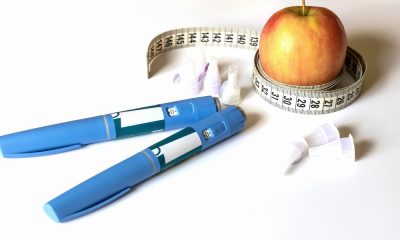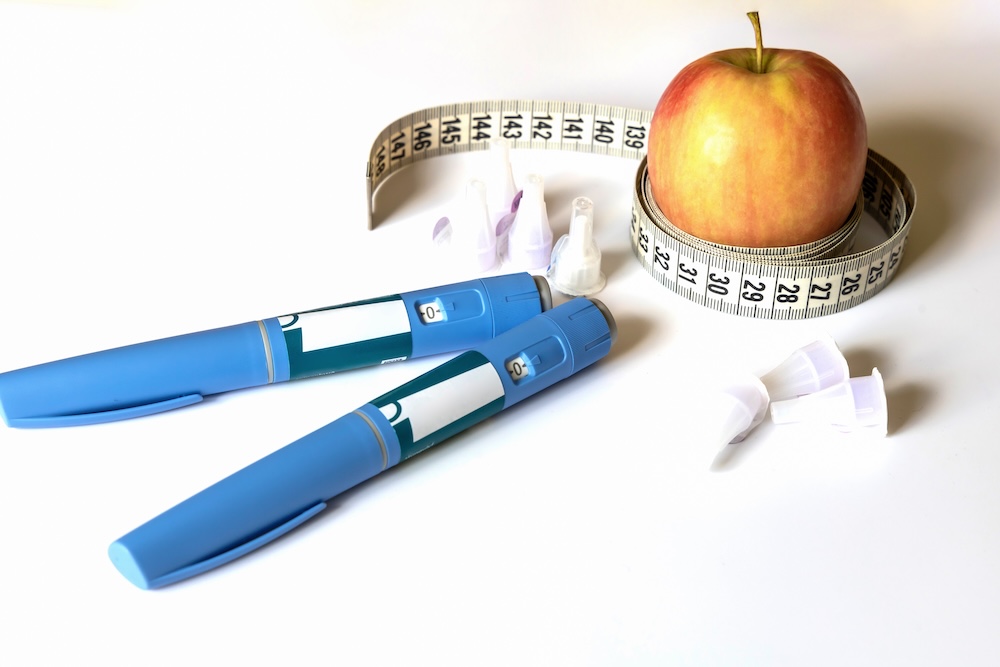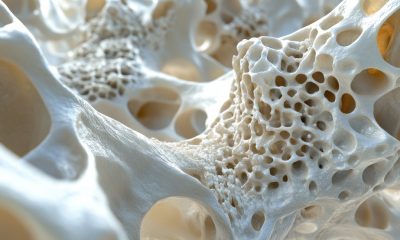Research
Model may explain how deep brain stimulation treats Parkinson’s

People with Parkinson’s disease and their doctors confront many unknowns, including the answer to exactly how deep brain stimulation (DBS) relieves some of the motor symptoms patients experience.
In a new study, scientists at Boston University and The Picower Institute for Learning and Memory at MIT present a detailed model explaining the underlying circuit dynamics, providing an explanation that, if experimentally confirmed, could improve the therapy further.
Among the things that are known about Parkinson’s disease is that a deficit of the neuromodulator dopamine is associated with abnormally high beta-frequency rhythms (brain waves at a frequency of about 20 Hz).
DBS, involving the delivery of high-frequency electrical stimulation to a brain region called the subthalamic nucleus (STN), apparently suppresses these elevated beta rhythms, restoring a healthier balance with other rhythm frequencies and better movement control.
The new biophysically-based computational model described in the Proceedings of the National Academy of Sciences posits that the beneficial effect of DBS arises from how it interrupts a vicious cycle promoting runaway beta in a circuit loop between the STN and a region called the striatum.
In 2011, study co-author Michelle McCarthy, research assistant professor of mathematics and statistics at BU, used mathematical models to show how, in the absence of dopamine, runaway beta might arise in the striatum from excessive excitement among striatum-dwelling cells called medium spiny neurons (MSNs).
The model, led by Picower Institute postdoc Elie Adam, builds on McCarthy’s finding.
Joining Adam and McCarthy are co-authors Emery N Brown, Edward Hood Taplin Professor of Medical Engineering and Computational Neuroscience at MIT and Nancy Kopell, William Fairfield Warren Distinguished Professor of Mathematics and Statistics at BU.
The quartet’s work suggests that under healthy conditions, with adequate dopamine, cells in the striatum called fast-spiking interneurons (FSIs) can produce gamma-frequency rhythms (30-100 Hz) that regulate the beta activity of the MSNs.
But without dopamine, the FSIs are unable to limit the MSN activity and beta comes to dominate a whole circuit loop connecting the STN to the FSIs, to the MSNs, to other regions and then back to the STN.
“The FSI gamma is important to keep the MSN beta in check,” Adam said. “When dopamine levels go down, the MSNs can produce more beta and the FSIs lose their ability to produce gamma to quench that beta, so the beta goes wild.
“The FSIs are then bombarded with beta activity and become conduits for beta themselves, leading to its amplification.”
When DBS high-frequency stimulation is applied to the STN, the model shows, that replaces the overwhelming beta input received by the FSIs and restores their excitability.
Reinvigorated and freed from those beta shackles, the interneurons resume producing gamma oscillations (at about half the DBS stimulation frequency, typically at 135 Hz) that then suppress the beta activity of the MSNs.
With the MSNs no longer producing too much beta, the loop leading back to the STN and then to the FSIs is no longer dominated by that frequency.
“DBS stops the beta from propagating towards FSIs so that it is no longer amplified, and then, by additionally exciting FSIs, restores the ability of FSIs to produce strong gamma oscillations, that will in turn inhibit beta at its source,” Adam said.
The model reveals another important wrinkle. Under normal circumstances, different levels of dopamine help shape the gamma produced by the FSIs. But the FSIs also receive input from the brain’s cortex.
In Parkinson’s disease, where dopamine is absent and beta becomes dominant, the FSI’s lose their regulatory flexibility, but amid DBS, with beta dominance disrupted, the FSIs can instead become modulated by input from the cortex even with dopamine still absent.
That allows them a way to throttle the gamma they provide to the MSNs, and enable a harmonious expression of beta, gamma and theta rhythms.
By providing a deep physiology-based explanation of how DBS works, the study may also offer clinicians clues to how to make it work best for patients, the authors said.
The key is finding the optimal gamma rhythms of the FSIs, which may vary a bit from patient to patient.
If that can be determined, then tuning the DBS stimulation frequency to promote that gamma output should ensure the best results.
Before that can be tested, however, the model’s fundamental findings need to be validated experimentally. The model makes predictions necessary for such testing to proceed, the authors said.
The National Institutes of Health provided funding for the research.
News
Weight loss jabs my only temporarily reduce ‘food noise,’ study finds
Research
Childhood loneliness linked to increased risk of dementia, study finds

Childhood loneliness increases the risk of dementia in later life, according to new research.
Adults who recalled being lonely and without a close friend in childhood faced a 41 per cent higher risk of developing dementia, even if they were no longer lonely as adults.
People who frequently felt lonely without close friends during youth showed accelerated cognitive decline — a worsening of memory and thinking — and started middle age with lower scores on these skills.
Researchers from universities in China, Australia and the US, including Harvard and Boston universities, analysed data from 13,592 Chinese adults tracked from June 2011 to December 2018.
The critical factor was the subjective feeling of loneliness itself. Those who reported often feeling lonely as children had a 51 per cent higher dementia risk, even if some had close friends.
However, those who only lacked close friends but did not feel lonely showed no significant difference in risk.
Nearly half of roughly 1,400 adults in the study reported being lonely and without close friends during childhood.
The 4.2 per cent who experienced both faced the highest risk of cognitive decline.
The link to dementia remained strong even for people who were no longer lonely in adulthood, suggesting early-life isolation can have lasting effects on brain health.
During childhood, the brain develops rapidly and is vulnerable to harm. Loneliness acts as a chronic stressor, flooding the developing brain with harmful hormones that can damage memory centres, and it reduces stimulation from social play and peer interaction that helps build robust neural networks.
A separate 2024 study of more than 10,000 older adults found that specific childhood hardships — including poverty, disruptive home environments or parental addiction — were directly linked to poorer cognitive function later in life.
Youth loneliness appears to be rising, partly linked to widespread social media use.
Among girls, 64 per cent aged five to seven, 67 per cent aged eight to 10, and 73 per cent aged 11 to 13 reported feelings of loneliness last year. More than a quarter of boys aged 11 to 17 in the US report feeling lonely.
Children face growing social isolation, with one in four Americans now eating every meal alone — a rate that has surged by over 50 per cent since 2003. Sharing meals with friends and family helps build bonds and positive memories in youth.
Fewer children are playing outside or joining team sports.
A recent study reported that one in three children do not play outside on school days, and one in five do not do so even at weekends.
The 2024 research found a direct, dose-dependent relationship between childhood adversity and cognitive problems in adults — the greater the early trauma, the greater the later risk.
For each significant increase in early trauma, individuals faced an eight per cent higher risk of daily memory issues and scored lower on objective tests of mental speed and focus.
News
One in 20 children has high blood pressure, study finds

Rates of high blood pressure in children have almost doubled since 2000, with more than one in 20 now affected, new global research shows.
In 2020, 6.2 per cent of under-19s had high blood pressure, compared with 3.2 per cent in 2000.
High blood pressure, also known as hypertension, now affects 114 million children worldwide, according to an international team including academics from the University of Edinburgh and Zhejiang University in China.
The authors examined data on 443,000 children from 21 countries and found obesity was a substantial driver of the problem.
Nearly 19 per cent of children and adolescents with obesity have high blood pressure, compared with 3 per cent among those with a healthy weight.
In England, one in ten (10.5 per cent) children in the first year of primary school is obese. By the final year, 22.2 per cent are obese, according to the National Child Measurement Programme.
High blood pressure occurs when the force of blood pushing against artery walls is consistently too high, which can damage blood vessels and organs over time.
Co-author Dr Peige Song of Zhejiang University attributed higher rates to unhealthy diets, decreased physical activity and rising childhood obesity.
She said: “The analysis showed that children and adolescents with obesity are nearly eight times more likely to develop hypertension.”
“Parents play a pivotal role in preventing and managing high blood pressure in children.
“Promoting healthy habits, such as a balanced diet rich in fruits, vegetables and whole grains while minimising salt and sugar intake, can substantially reduce the risk of hypertension.”

 Wellness1 month ago
Wellness1 month agoScientists discover new anti-ageing drug class that could extend lifespan

 News3 weeks ago
News3 weeks agoUCR scientist wins AFAR grant for immune ageing

 Research2 months ago
Research2 months agoBone breakthrough could reverse osteoporosis

 Insights1 month ago
Insights1 month agoMost Americans would be considered obese under new guidelines

 Independence2 weeks ago
Independence2 weeks agoResearcher wins grant for tissue ageing study

 News7 days ago
News7 days agoSupplement could restore memories lost by Alzheimer’s, study finds

 News2 months ago
News2 months agoResearch uncovers ageing secrets of world’s oldest woman

 Wellness4 weeks ago
Wellness4 weeks agoJust 30 mins of light activity can boost energy and mood, study finds


































